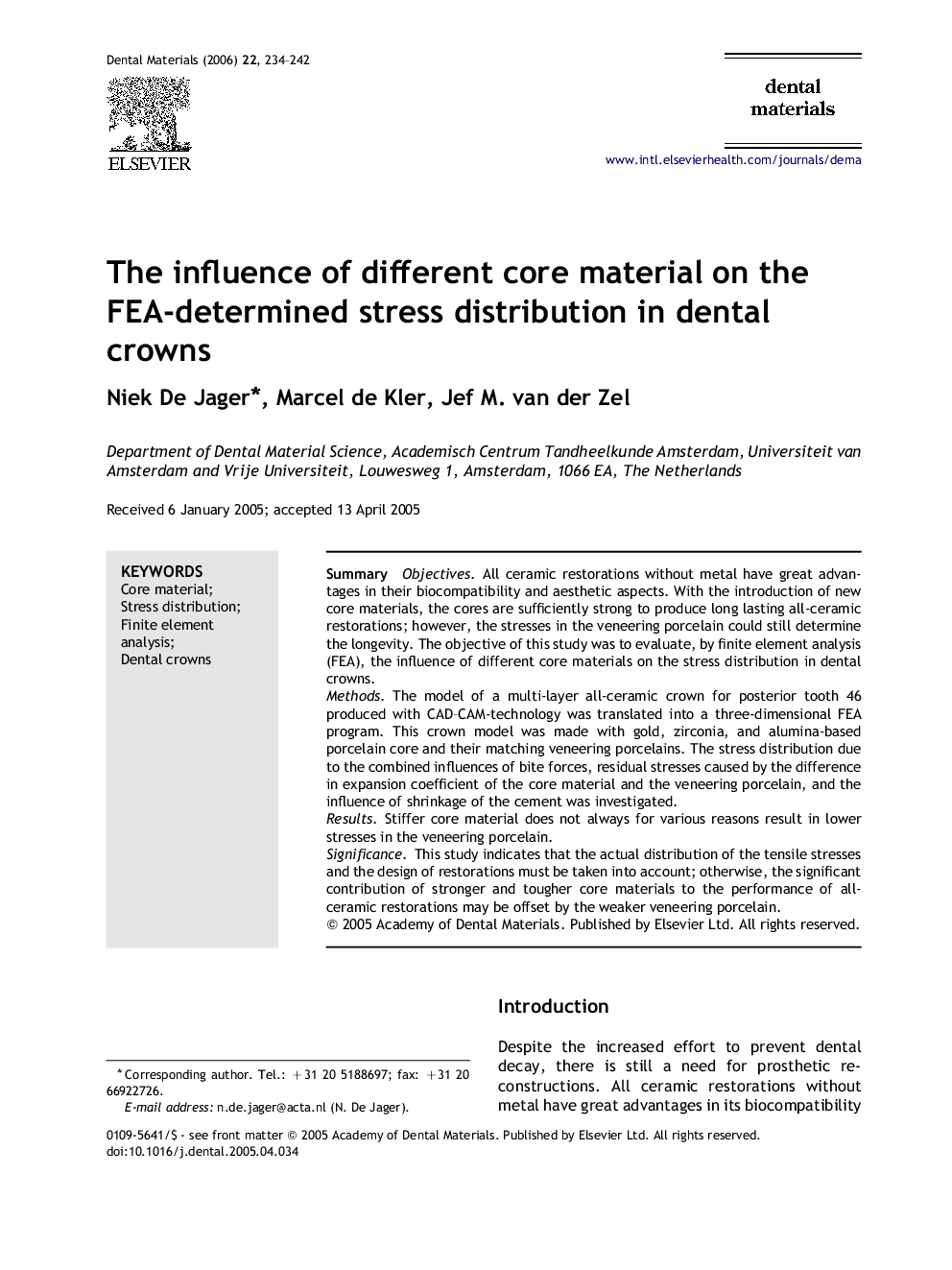| Article ID | Journal | Published Year | Pages | File Type |
|---|---|---|---|---|
| 1423191 | Dental Materials | 2006 | 9 Pages |
SummaryObjectivesAll ceramic restorations without metal have great advantages in their biocompatibility and aesthetic aspects. With the introduction of new core materials, the cores are sufficiently strong to produce long lasting all-ceramic restorations; however, the stresses in the veneering porcelain could still determine the longevity. The objective of this study was to evaluate, by finite element analysis (FEA), the influence of different core materials on the stress distribution in dental crowns.MethodsThe model of a multi-layer all-ceramic crown for posterior tooth 46 produced with CAD–CAM-technology was translated into a three-dimensional FEA program. This crown model was made with gold, zirconia, and alumina-based porcelain core and their matching veneering porcelains. The stress distribution due to the combined influences of bite forces, residual stresses caused by the difference in expansion coefficient of the core material and the veneering porcelain, and the influence of shrinkage of the cement was investigated.ResultsStiffer core material does not always for various reasons result in lower stresses in the veneering porcelain.SignificanceThis study indicates that the actual distribution of the tensile stresses and the design of restorations must be taken into account; otherwise, the significant contribution of stronger and tougher core materials to the performance of all-ceramic restorations may be offset by the weaker veneering porcelain.
